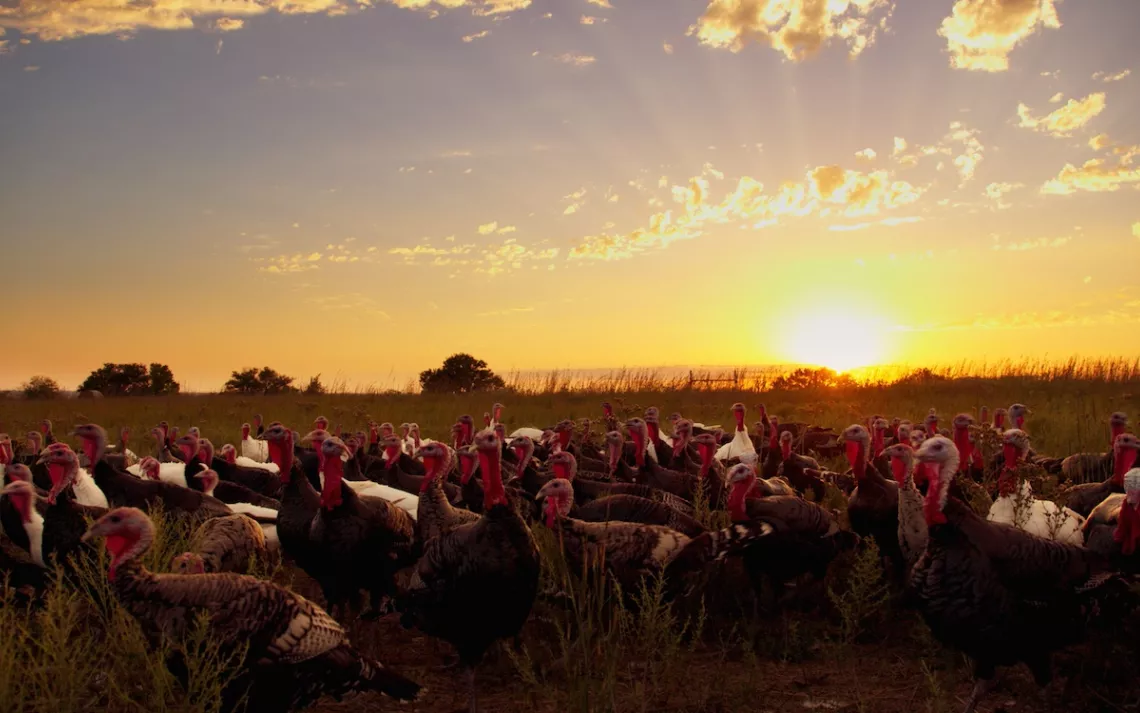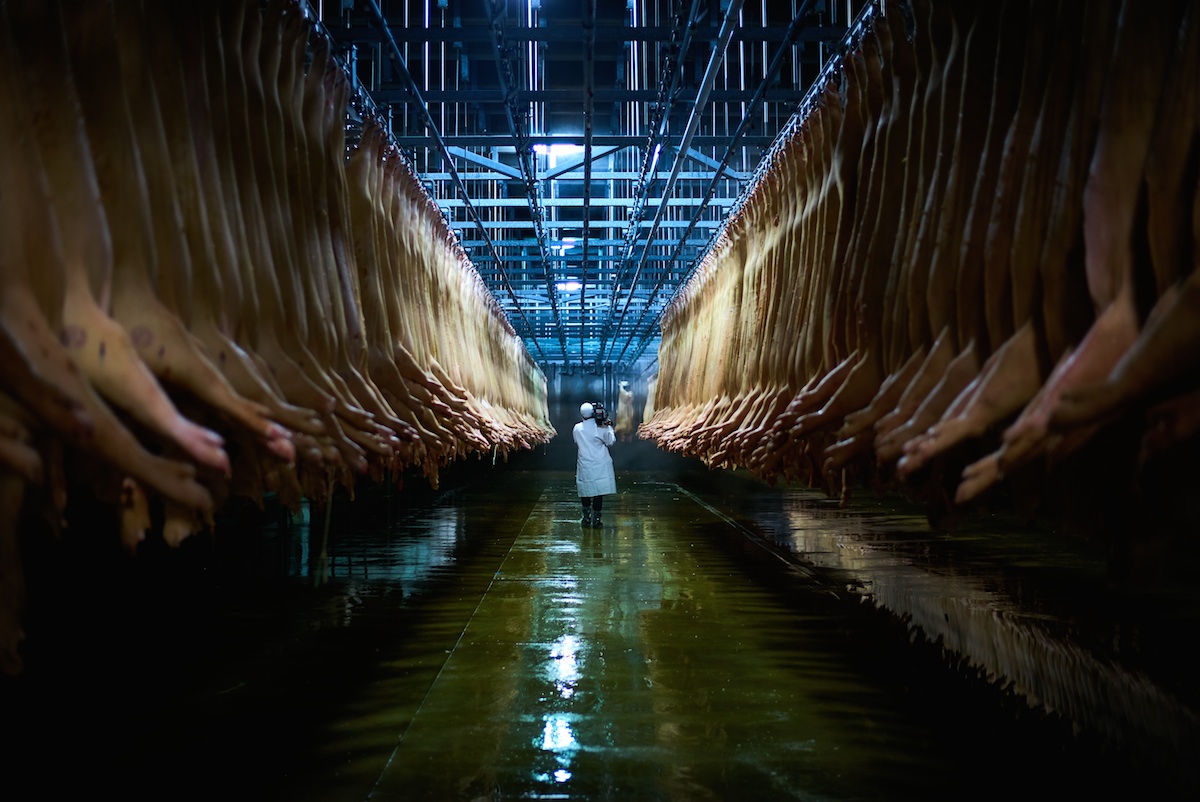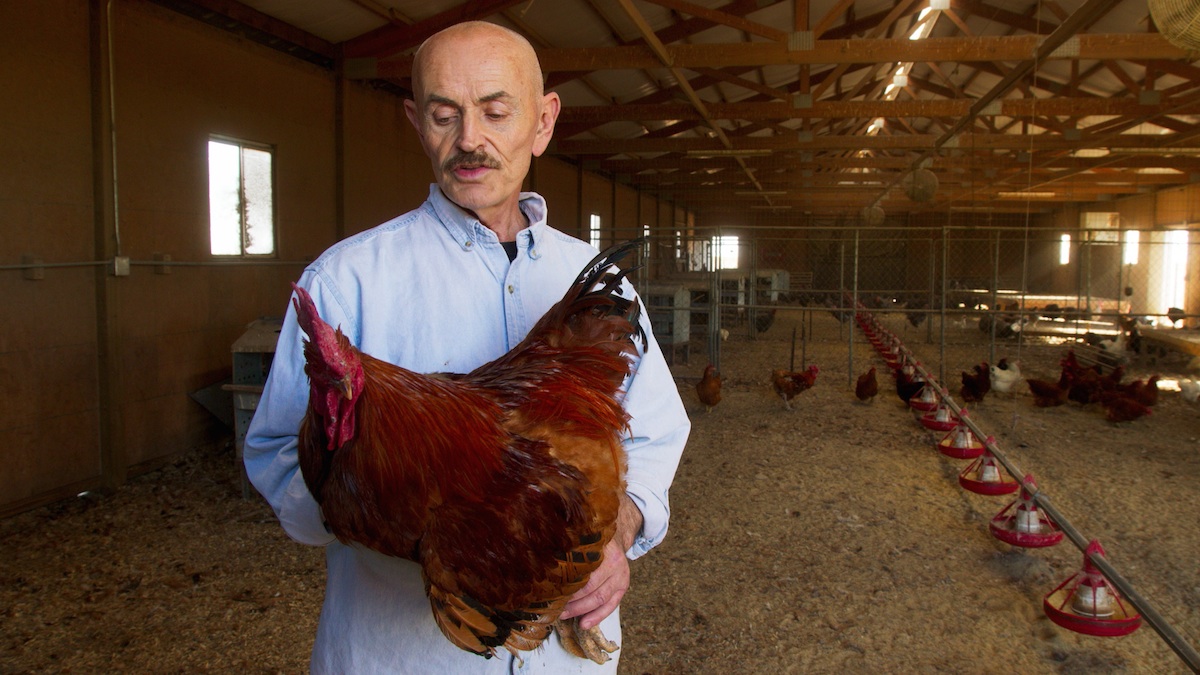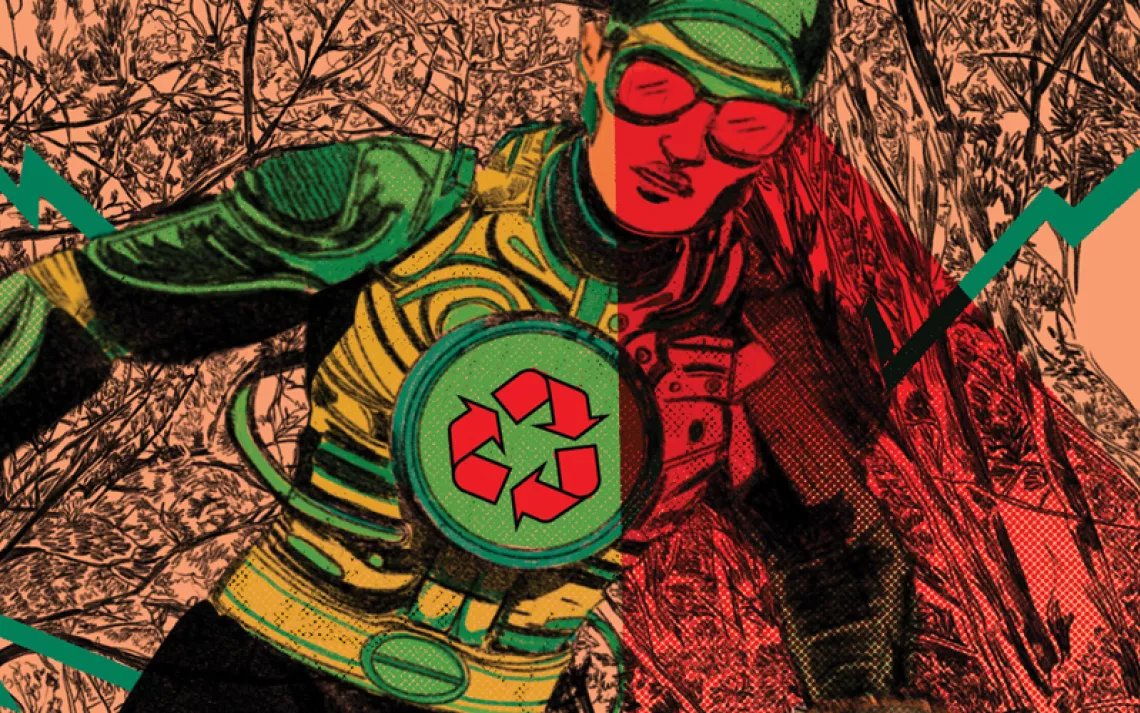“Eating Animals” Drives Home Where Our Food Really Comes From
A new documentary delves into the biggest contributor to climate change

It started with a call, from actress and animal rights activist Natalie Portman to author Jonathan Safran Foer. The latter had recently taken a break from novel-writing to publish 2009’s New York Times best-selling treatise Eating Animals—an in-depth discussion of what it means to eat animals in an industrialized world, with all attendant environmental and ethical concerns. The two planned a meeting in Foer’s Brooklyn backyard, and also invited documentary director Christopher Dillon Quinn (God Grew Tired of Us). The idea was to figure out how to turn Foer’s sprawling, memoiristic book into a documentary that would ignite mainstream conversations around our food systems.
The fruit of that discussion opens in select theaters today. Narrated by Portman, Eating Animals begins with the simple question about how much we really know about the food on our plates. The film succinctly traces the history of farming from its small-scale, agrarian roots to the rise of large-scale industrialized farming—which incidentally started in 1923, when Delaware housewife Celia Steele accidentally ordered 500 rather than 50 chicks and experimented with keeping them inside and maximizing their productivity, thus creating the first “broiler house.” This planted the seed that resulted in today’s proliferation of industrial livestock operations, through which huge agribusinesses pit contracted farmers against one another to produce ever more Chicken McNuggets, KFC, and cheap grocery meat. The film follows several farmers—including a factory farmer running one such operation (which he describes as a “treadmill of debt”), a rancher who raises heritage turkeys, an Iowan raising the healthy hogs that end up on conscientious foodies’ plates, and others. All sources are united in their desire to bring farming back to its roots in the American heritage, and away from its polluting, health-endangering, and increasingly inhumane state. Early on in the film, Portman, quoting Foer’s writing, states that whereas farmers used to profit by working in concert with nature, Big Ag’s goal is to calculate “how close to destruction we can keep the environment without losing it altogether.”
 Eating Animals isn’t necessarily out to expose the cruelty that feeds so much of American life; in fact, much of its content is devoted to pastoral footage of happy animals that are beloved by their farmers and granted great pre-slaughter lives. Yes, other footage does reveal massive stacks of chickens in battery cages, the Pepto-Bismol pink fecal hog lagoons of North Carolina, and the many antibiotic-doused animals that have been bioengineered to grow obese and lame during their few weeks of existence. “They’ve calculated how close to death we can keep an animal without killing it,” Portman intones. However, Eating Animals doesn’t offer what so many activists and whistleblowers have already seen: a blow-by-blow account of the horrors of Concentrated Animal Feeding Operations (CAFOs) and what happens inside slaughterhouses.
Eating Animals isn’t necessarily out to expose the cruelty that feeds so much of American life; in fact, much of its content is devoted to pastoral footage of happy animals that are beloved by their farmers and granted great pre-slaughter lives. Yes, other footage does reveal massive stacks of chickens in battery cages, the Pepto-Bismol pink fecal hog lagoons of North Carolina, and the many antibiotic-doused animals that have been bioengineered to grow obese and lame during their few weeks of existence. “They’ve calculated how close to death we can keep an animal without killing it,” Portman intones. However, Eating Animals doesn’t offer what so many activists and whistleblowers have already seen: a blow-by-blow account of the horrors of Concentrated Animal Feeding Operations (CAFOs) and what happens inside slaughterhouses.
That’s because this film isn’t presenting the horrors of industrialized farming as news per se, but rather urging audiences to consider what they already know to be true. Eating Animals conveys a great deal of compassion for the farmers themselves, many of whom would not be able to survive today’s economy if not for being the pawns of mega-corporations like Tyson and Smithfield. It also reveals the ways in which lawmakers funded by Big Ag have passed statutes that institutionalize the cycle of producing and consuming cheap, factory-farmed meat.
That said, pro-vegetarian propaganda this film is not. While Portman is a vegan and Foer, a credited producer, is vegetarian, Quinn is an omnivore, which the others saw as an asset. After all, Eating Animals doesn’t posit that consuming meat is intrinsically bad, but rather that the circumstances surrounding it—environmental degradation, increased use of antibiotics, “ag gag” laws, and animal-tending practices developed to be as cost-efficient as possible—are becoming overwhelmingly urgent. Americans are consuming more meat than we were when Foer published the book; what’s more, our animal-product-intensive eating habits are proliferating throughout the world. As the global population is expected to balloon to 9 billion in the next 50 years, industrial farming—which already accounts for 50 billion animals raised for food—is only poised to further explode.
This film not only offers an objective look at the debate over eating animals, but it also discusses ways in which we can sustainably raise animals and avoid the inherent problems of factory farming. It also brings in Temple Grandin to discuss some positive changes the industry has made. To learn more about the years-long process of creating this complex, unsettling, and absorbing film, Sierra called up director Christopher Dillon Quinn.
***
Sierra: The film seems to be only loosely based on Foer’s 2009 book. Can you talk about that adaptation process?
Quinn: During that first meeting with Jonathan and Natalie, I made it clear that I wanted to, as Jonathan did in the book, create a personal case for why food matters from a family standpoint. We decided not to go down the same road Jonathan had in the book, which started with family stories about his grandmother, but I still wanted to follow subjects very closely, so that through their eyes, you start to see the bigger picture. The part of the book that probably captivated me most were the many open letters from farmers themselves, where Foer just let them say what they wanted. I sought to expand those narratives. So we followed subjects like one such farmer from the book, Frank Reese, the Kansas rancher raising heritage turkey breeds that have been around for centuries. It was fascinating to follow these farmers and see the contrast, because by and large, the chicken we eat today has been hybridized by genetic companies to become broad-breasted birds designed to create as much white meat as possible, and whose bodies are compromised in such a way that they start to break down in just a couple of weeks.
Who was your intended audience?
We wanted to cast a wide net, but it’s hard because a lot of people don’t want to look under the hood and really think about where their meat, dairy, and eggs come from. We didn’t want to wag the finger and tell people not to eat meat, but rather to portray the food industry from as many angles as possible so that anyone could watch it and find value in it. It’s why audiences see how the contract farmers are under the thumb of a very large, vertically integrated system that holds many in debt their whole lives—it’s not just the animals suffering. And of course, there’s nothing else on the planet that causes more environmental degradation than raising animals for our food, so that’s pertinent to absolutely everyone. Everybody knows something’s wrong with our food system and that compromises are made, so hopefully this film offers a way to ultimately make some choices.
 What was the most difficult part of making this film?
What was the most difficult part of making this film?
It forces you to adapt and change, and nobody likes that—I certainly didn’t! I’ve opted out of commodity meat altogether, but I was at an event recently honoring Frank Reese and I was happy to eat his bird when it was put on my plate. The other was the visceral reaction I had to really seeing where my milk, my butter, my cheese come from. But the film is really meant to help facilitate those difficult conversations around whether you want to support a system that takes so much from our environment and society and gives so little back. With the world’s population set to explode, this is kind of the most pressing thing we have to address—we don’t have enough water or resources to keep feeding people like this—and so I like to think this film could be a starting point for a conversation that could result in real change.
 The Magazine of The Sierra Club
The Magazine of The Sierra Club







